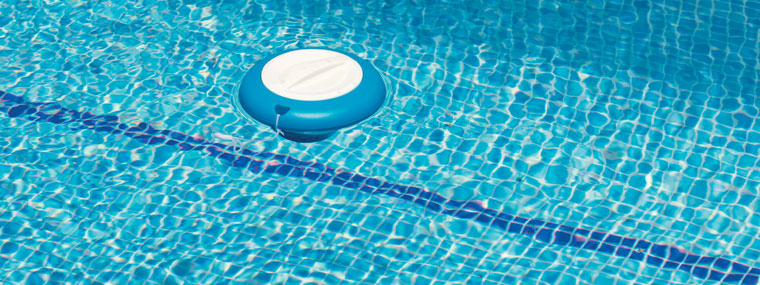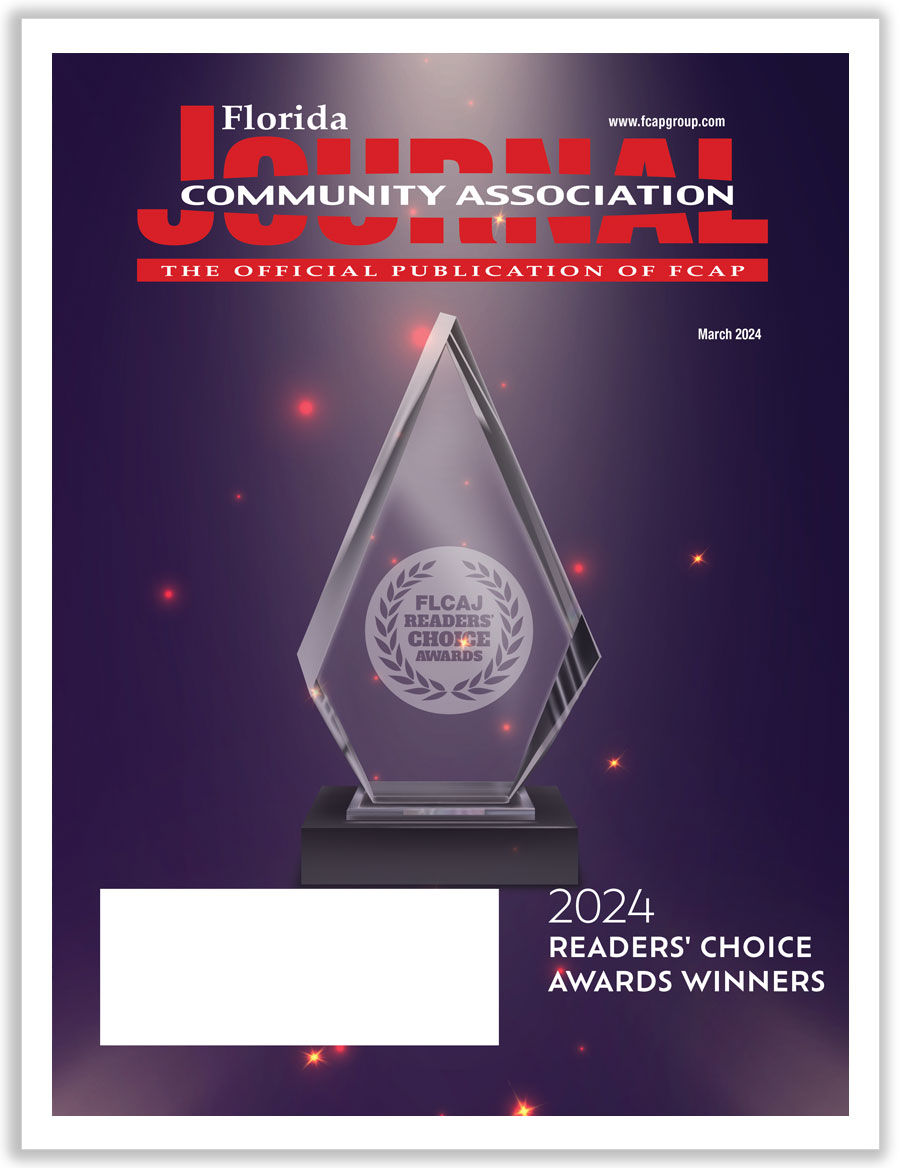
New Technologies and Old Solutions
Revisiting Chlorination In A New World
By Alvaro G. Mendoza / Published July 2023

For decades deciding how to chlorinate your pool and spa was a simple choice. Did you utilize cheap and available liquid bleach (sodium hypochlorite) or use a tablet instead? Sure, you could use either a hockey puck-shaped trichlor (trichloro-s-triazinetrione) tablet, which was mostly utilized in residential pools, or you could use cal-hypo (calcium hypochlorite) tablets or briquettes.
One thing about chlorination is that there are two components to each alternative: the active ingredient, HOCL (hypochlorous acid), which is used up relatively quickly, and a byproduct that stays around in the water for long periods of time. Since the HOCL is the same among all types, some choices in chlorination had more to do with cost, availability, and which byproduct was more beneficial to your operations. Keep reading below for further discussion.
For decades price and production were fairly stable for each alternative, so folks picked their favorite and used them religiously for years, with little incentive to change. Then came the pandemic, a fire, and the emergence of new technologies and alternatives.
In a July 2021 FLCAJ article, we discussed the preliminary effects of the pandemic, which included up to 35 percent price increases, allocation issues, shortages, and long-term market corrections. A devastating fire in one of the U.S.’s larger tablet manufacturing plants, which is now coming back online, further compounded the problem.
Besides the pandemic closures and market interruption, it turns out that many consumer products and critical building supplies, which is everything that went into hyperdrive during a post-pandemic boom, are made from chlorine. This includes most plastics, pvc, rubber, pesticides, refrigerants, components for many consumer goods, and even muriatic acid.
What we didn’t know back then and would not have anticipated is that issues have continued to escalate. The price increases and shortages are continuing today, although they are showing signs of recovering in possibly a year or two. Many don’t expect the pricing to substantially return to pre-pandemic levels as issues like spiraling labor costs, availability, and transportation costs aren’t likely to reverse.
But when one door closes, another one invariably opens. Condominium operators, frustrated with elevating costs and spotty supply, have looked for alternatives and solutions to this issue. A few of these are mentioned here.
Select Your Chlorine Wisely
Liquid bleach was traditionally the cheapest alternative, but the prices have virtually doubled or more since the pandemic, bringing the appeal of this alternative way down. As transportation costs skyrocket, the cost of moving thousands of gallons of something that is mostly water tips the scale toward other alternatives. The byproduct of bleach is salt, and many folks find salty-tasting water offensive.
Trichlor tablet costs, on the other hand, are starting to normalize a bit as new plants come back online. But this is not a perfect chemical for commercial pools. Why? The byproduct of trichlor tablets is a chemical called cyanuric acid, or stabilizer. In 2016 the CDC (Centers for Disease Control) published a guidance recommendation, adopted by most health departments, for treating AFR (accidental fecal release) in a pool or spa. This guidance was designed to help safeguard patrons from Cryptosporidium and other potentially deadly organisms. Under the guidelines, pools with more than trace (15 PPM) levels of stabilizer would need to drain the water from their pool (depending on the stabilizer level), refill it before shocking the pool for 8–40 hours, and then reopen to reach compliance with CDC AFR treatment recommendations. Since the use of trichlor increases stabilizer levels very quickly, and few operators want to induce such a daunting task after a simple AFR, the use of trichlor has lost popularity among responsible operators. Overstabilization also suppresses ORP (oxidation reduction potential—an electronic measurement of the kill power of chlorine), reducing chlorine’s effectiveness and contributing to lifeless or cloudy pool water that does not meet the DOH’s (Department of Health) minimum standard for water quality.
The other tablet, cal-hypo, has evolved into a terrific alternative. The price increases in bleach have brought cal-hypo costs in line, but some cal-hypo alternatives are actually more of an all-in-one chemical and can provide a significant cost savings in overall treatment costs. The leading cal-hypo brand provides the chlorine, calcium, bicarbonate, and stain prevention chemicals, all very important to overall pool water balance, while utilizing up to 90 percent less muriatic acid neutralization than some bleach compounds. Also, muriatic acid, as we mentioned earlier, is made from chlorine and has almost quadrupled in price since the pandemic. The calcium and bicarbonate addition helps protect your expensive pool finish from premature degradation, while the stain inhibitor helps prevent staining from copper and iron found in many city water supplies. This brings the overall treatment costs of cal-hypo below the bleach alternative, which would require the addition of those chemicals manually at a significant cost.
Make Your Own
Another trend gaining momentum is the on-site production of chlorine via saline chlorination technologies. There are two ways to accomplish this, and they both utilize salt and electricity. The most common is using a wall-mounted saline control panel with a pipe-mounted reaction chamber. Salt is added to the pool at 3,500–5,000 ppm, or about 1/7th to 1/10th the concentration of seawater. Pool water then passes through the chamber, and pure chlorine is produced. The salt is reused and is only diluted by leaks, backwashes, or splash out. The most popular systems automatically maintain the proper salinity level in the pool, and one merely fills the salt vat with 100 percent solar rock salt while the system does the rest.
Another version of this technology utilizes an off-line skid-mounted package, which houses the controls, reaction chamber, and process tank that provides some storage. In this version the salt is NOT introduced directly into the pool, but it is controlled and injected into the treatment loop, making this option popular with facilities that have welded stainless-steel pools or gutters and/or facilities that are not interested in the popular “mineral feel” of pool water found with traditional saline chlorination systems.
These saline alternatives typically can cost tens of thousands of dollars in an average condominium pool, but they provide a significant savings with a quick ROI. Some facilities implement them using a lease plan, which normally makes the investment self-funding through the chemical savings.
Exciting New Technologies and High-Strength Oxidizers
There are a handful of new technologies and high-strength oxidizers that are just starting to make their way into the market, and it is good to put them on your radar. Most of these will utilize more industrial- or municipal-type chlorination compounds and some European alternatives. These oxidizers are best suited for higher-use and higher-demand pools and offer enhanced water quality and more protection against potentially harmful organisms and chlorinated byproducts. They also offer savings by supplementing traditional chlorination, which must remain in place in most codes. One might investigate these options if the traditional chlorination system is not keeping pace with bather loads and typical alternatives have not resolved the issue.
Another emerging technology deals with the use of a “non-cyanuric” chlorine stabilizer that protects chlorine from destruction from UV rays without suppressing ORP and without impacting the CDC AFR guidelines. This readily available European technology provides an affordable alternative for those looking to stretch their chlorine dollars without the negative consequences from the use of traditional stabilizer.
Conclusion
Navigating the current supply chain issues regarding chlorination indeed adds some complexity to what was once a very simple process, and there are several important factors to consider. If your existing system is working great and your treatment program is comprehensive and within your budget, then no further action is needed. That’s a good thing as some suppliers, in specific areas and under shortage conditions, are not taking on new customers.
If things are not going well, then change might be required. Each association must first budget adequately for chemicals, including annual increases, as proper chemical treatment is not an option but is mandated by state and local codes and national health code guidelines. Besides, the potential of liability-related issues from inadequate chlorination are far more costly than following the applicable codes.
Next, operators must consider the overall cost of chemical treatment and should pay attention if their current provider is handling ALL aspects of water balance (including calcium and alkalinity), not just chlorine and pH control. The cost of refinishing a pool or replacing a heater can far outweigh any potential savings from using a cheaper chlorine-only alternative.
Finally, if a more aggressive approach is desired, including manufacturing chemicals on site or utilizing some emerging treatment technologies, then more research might be required. The organization should move responsibly when implementing these alternatives as the path is less traveled, and some technologies might not have established track records. While there is a great track record for some of the saline technologies, others have fallen short of expectations. Under these conditions, simple reference checks of companies and a review of older installations will help reduce risk for the organization.
Alvaro G. Mendoza, CEO
Aquafinity, Commercial Energy Specialists (CES)
As CEO, Alvaro oversees CES, Knorr Systems Int’l. (KSI), and Duffield Aquatics, joining forces as Aquafinity to provide complete water control nationwide. With over 137 years of combined industry leadership, Aquafinity helps you take total control of your pool operation for affordable, crystal-clear water with guaranteed results. Programs are custom tailored and consist of controls, treatment and filtration hardware, software, training, service, supplies, remote monitoring, alert notification, and ongoing training & support. Pioneering expertise in self-funding sustainable modernizations help save power, gas, water, chemicals, and labor while providing safe, compliant operations. For more information, call 561 744-1557 or visit www.aquafinity.com.




